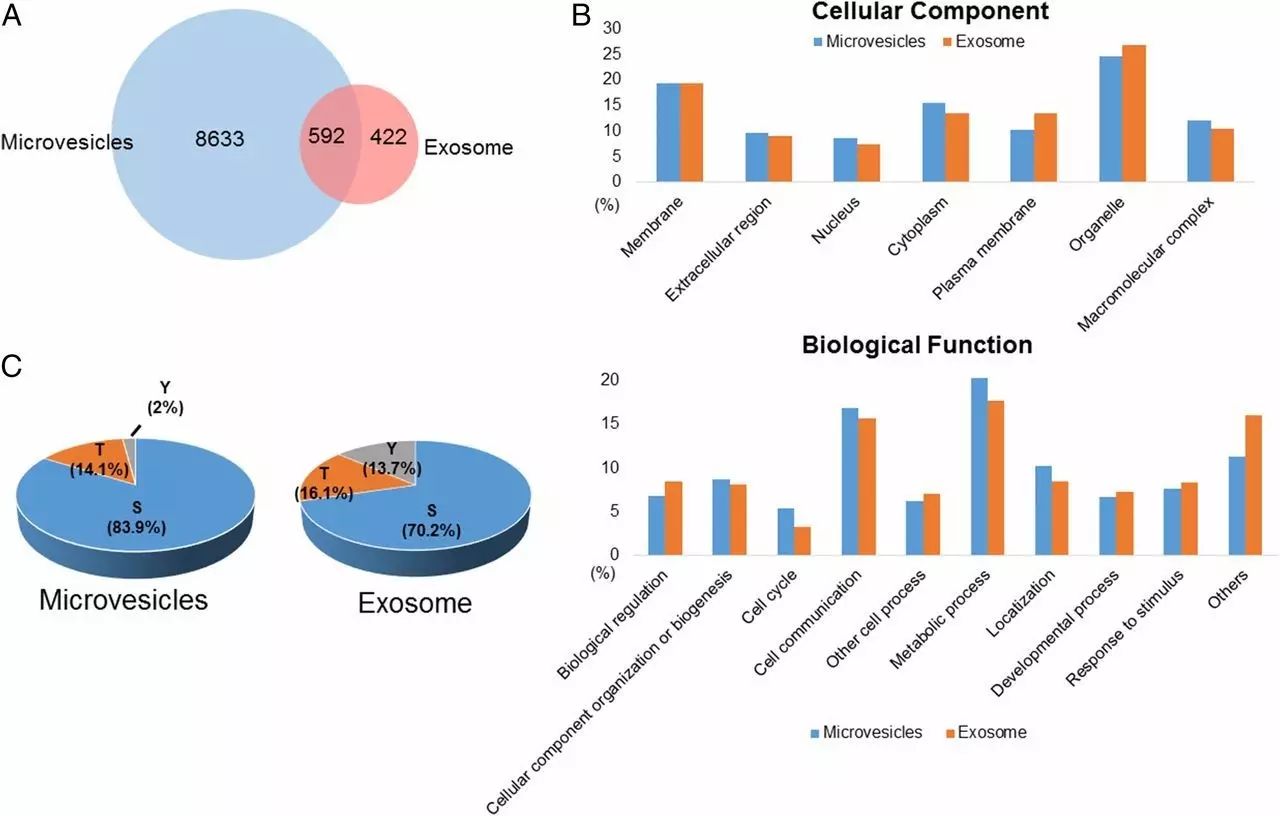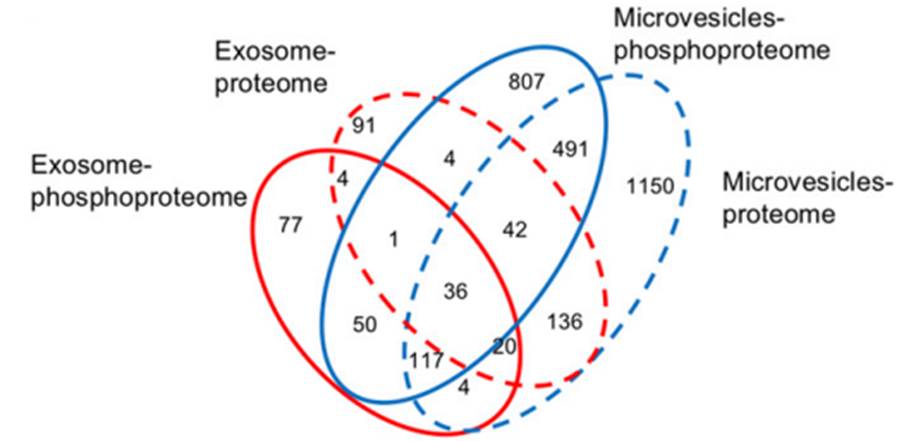[No more, only more] Phosphoproteomics in extracellular vesicles
Changes in protein phosphorylation levels may indicate changes in disease, but few phosphorylated proteins have been developed as markers for disease diagnosis. Extracellular vesicles are microenvironments enclosed by membranes and are unaffected by external proteases and other enzymes. This makes the extracellular vesicles highly stable in body fluids, providing an opportunity for the development of phosphorylated proteins for medical diagnosis.
Today I will introduce an article related to phosphorylated proteins in extracellular vesicles:
Phosphoproteins in extracellular vesicles as candidate markers for breast cancer
PNAS, doi: 10.1073/pnas.1618088114
This study extracted and identified the most abundant phosphorylated proteins from microvesicles and exosomes, and performed relative quantitative analysis of phosphorylated proteins in healthy and diseased groups (breast cancer). A number of potential biomarkers were screened, and several target proteins were selected from them, and PRM was used for post-validation in healthy and disease groups.
[main result]
1. By far the most, no one
A total of 9643 phosphorylated characteristic peptides were identified in this experiment, which is the largest number of phosphorylated peptides identified to date in extracellular vesicles derived from human blood samples. The experimental flow diagram is as follows.

Figure 1. Schematic diagram of the experimental procedure (n=6 for healthy group, n=18 for disease group)
2. Microbubbles and exosomes vary greatly
7000 phosphorylated characteristic peptides were identified in an average of 1 mL of human plasma. Phosphorylated peptides identified in exosomes, 50% of which are also detectable in microvesicles. These phosphorylated proteins are mainly involved in biological processes such as cellular communication, stimuli response, and biological origin. The proportion of tyrosine, threonine and serine phosphorylation in microbubbles was 2.0%, 14.1%, and 83.9%, respectively. The proportion of tyrosine phosphorylation in exosomes was higher, at 13.7%. It is close to the phosphorylation ratio of threonine (16.1%). This suggests that the biological origin of microvesicles and exosomes is quite different. as shown in picture 2.

Figure 2. Distribution of phosphorylated peptides and phosphorylated proteins in microvesicles and exosomes
3. The level of phosphorylation does increase regardless of the amount of protein expression!
There was a significant difference in protein phosphorylation levels between the healthy group and the extracellular vesicle protein group in the diseased group. This difference was not caused by a change in the amount of protein expressed, but actually reflected the extent of extracellular vesicle protein phosphorylation in the patient group (Fig. 3).

Figure 3. Overlapping Venn diagram of microvesicle and exosome proteome and phosphorylated proteome
4. PRM verification experiment - complete and rigorous
Selection of four phosphorylated proteins RALGAPA2, PKG1, TJP2 and NFX1 with PRM method was validated in 13 cancer patients and seven healthy samples. The results indicate that these four proteins are significantly highly expressed in cancer patients.
[å°ç¼–心得]
This is a classic literature on the detailed and complete analysis of phosphorylated proteins in extracellular vesicles of breast cancer patients using Label-free relative quantification and PRM targeted validation. Not only has the method of extracellular vesicle phosphorylation proteome research been established, but the phosphorylated protein screened in the experiment is expected to be used in the diagnosis and screening of cancer, which has greatly promoted diagnostic medicine.
Protein|modification|metabolism|lipid|structural confirmation
T: 021-54665263
E:
Q: 1875681852
Concentrated extraction powder is a plant as raw material, in accordance with the need for the use of the extracted end product, after physicochemical extraction and separation process, directed to obtain and concentrate one or more of the active ingredients in the plant, without changing the structure of its active ingredients and the formation of the product. According to the extraction of plant components, the formation of glycosides, acids, polyphenols, polysaccharides, terpenes, flavonoids, alkaloids, etc.; according to the different traits, can be divided into plant oils, extracts, powders, crystals and so on.
Concentrated Extract Powder,Proportional Extract,Extractum,Concentrated Powder
Shaanxi Zhongyi Kangjian Biotechnology Co.,Ltd , https://www.zyplantextract.com